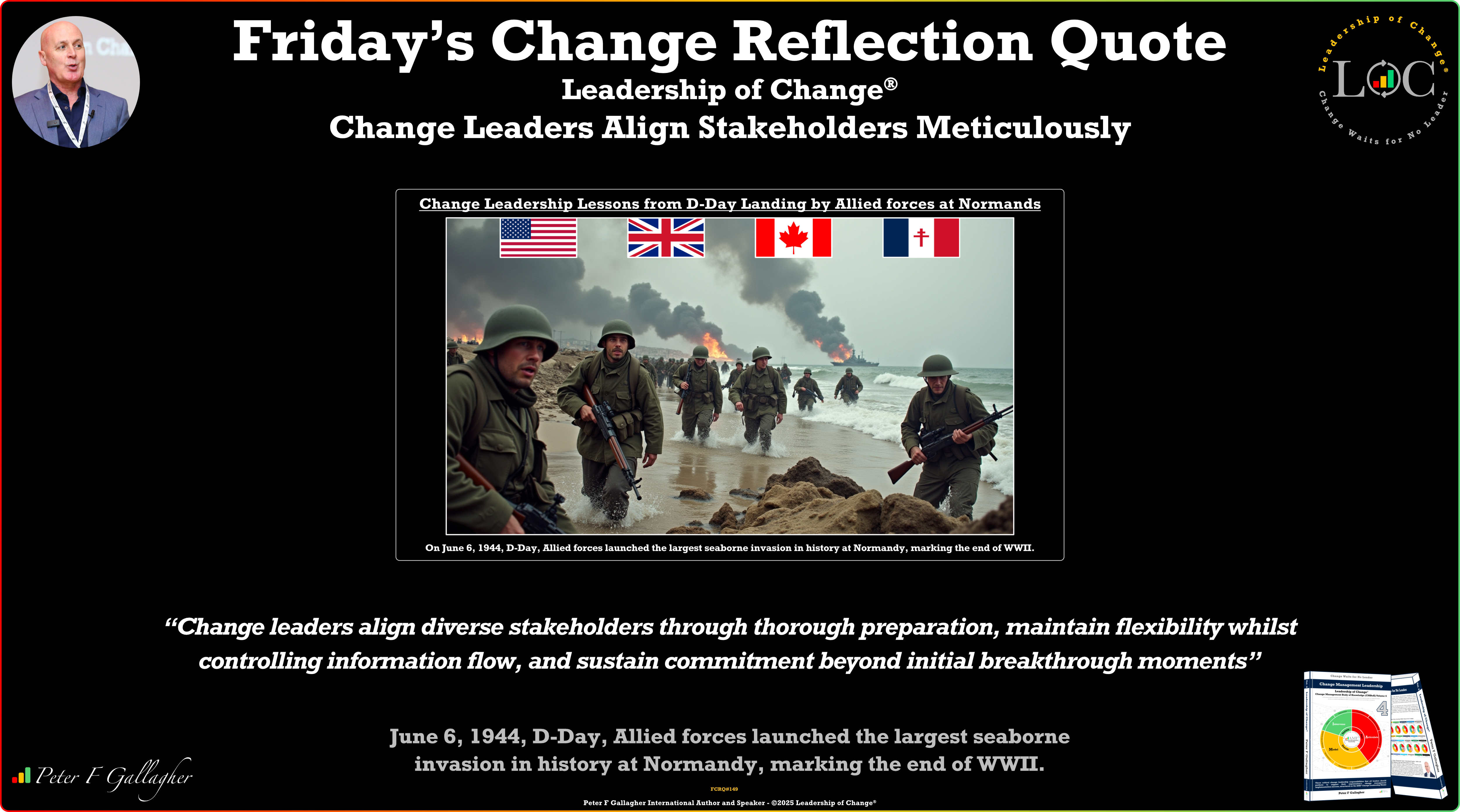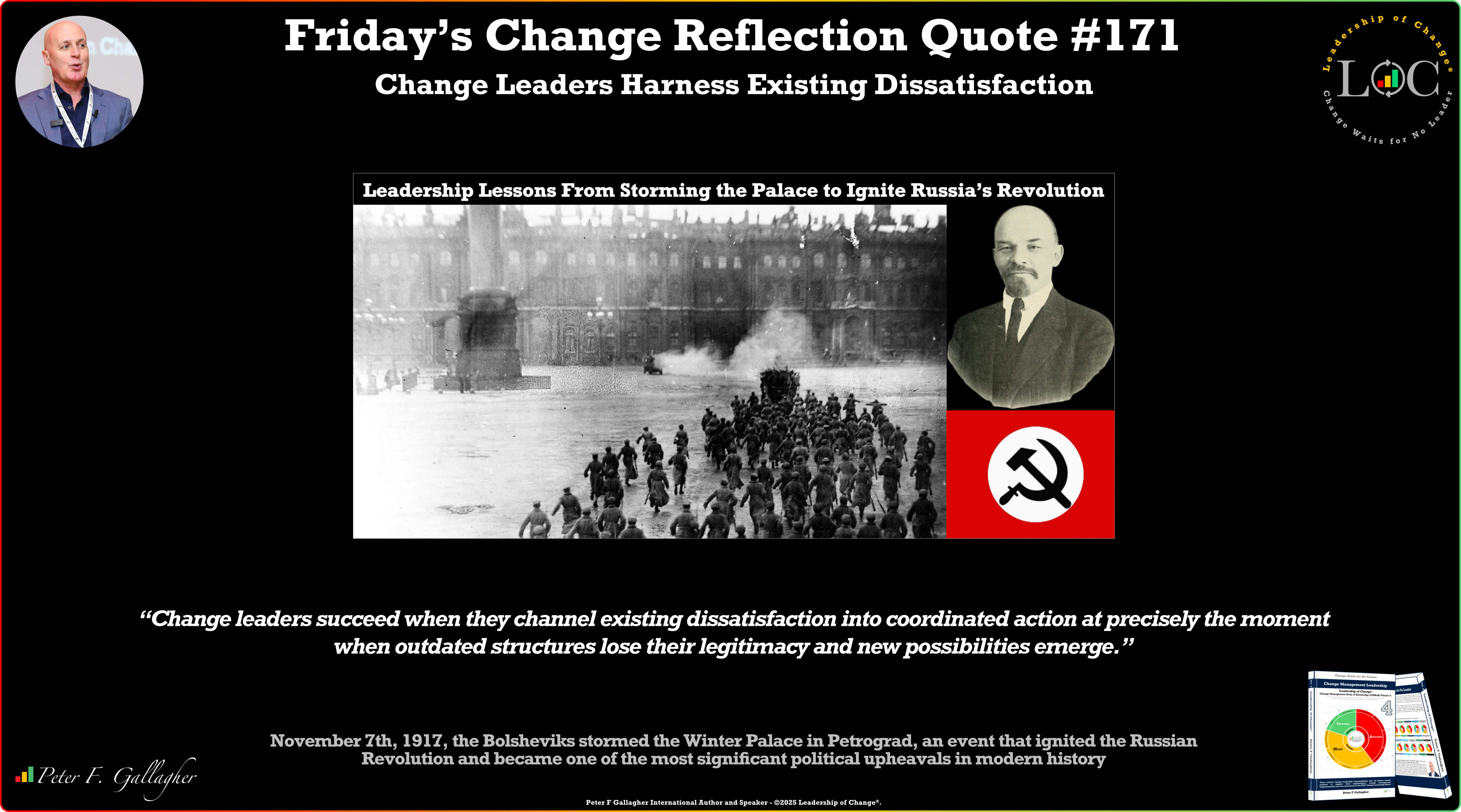Jun06

Leadership Learning!
On this day, 6th June 1944, D-Day, Allied forces launched the largest seaborne invasion in history at Normandy, initiating the final chapter of World War II in Europe. Operation Overlord demanded an extraordinary mobilisation of resources, strategy, and leadership across multiple Allied nations. Nearly 160,000 troops landed on the first day, and over two million would be in France by the end of August. By mid-1944, nearly nine million tonnes of supplies had been shipped from North America to Britain—underscoring the monumental logistics behind this decisive turning point. The invasion delivered five naval assault divisions to the Normandy beaches—UTAH, OMAHA, GOLD, JUNO, and SWORD, supported by 7,000 ships and landing craft, and over 195,000 naval personnel from eight Allied nations. Troops from four Allied nations landed on D-Day: the United States, United Kingdom, Canada, and Free France. These countries contributed ground forces on the beaches or through airborne operations, forming the core military effort on 6 June 1944. The campaign unfolded in two key phases: Operation Neptune (the naval assault) and Operation Overlord (the broader land invasion). British and American airborne forces also landed inland, reflecting the complexity of synchronising land, sea, and air objectives. The leadership of General Dwight D. Eisenhower, who unified Allied forces under a single strategic vision, and General Bernard Montgomery, who commanded the ground assault, were instrumental in maintaining alignment and focus. Strategic alignment among the Allies proved challenging. Though united in defeating Germany, the US and Britain clashed over tactics until the Trident Conference in May 1943 resolved to launch the cross-Channel invasion. Intelligence and deception were equally vital. Operation Bodyguard misled German forces about the location and timing of the attack, requiring coordination across intelligence networks and military commands. Human resources came from a vast Allied coalition. Over 1.4 million American servicemen and a substantial Canadian force had arrived since 1943, demanding integration of different military cultures, training standards, and command systems. Weather added uncertainty, forcing a one-day delay from the original 5 June date. The air component was equally vital; airmen had spent months degrading German air and transport capabilities to enable the invasion’s success. D-Day was not just a military operation—it was a masterclass in coalition leadership, strategic alignment, and high-stakes execution. It remains a defining example of how leaders can orchestrate complex, multinational change under immense pressure.
Change Leadership Lessons: This extraordinary historical event offers enduring leadership insights for those guiding modern transformations. The coordination and scale of D-Day offer compelling lessons for modern change leaders operating in complex, high-risk environments. Leaders of change must align multiple organisations with different cultures towards unified objectives whilst maintaining individual strengths and capabilities. They require extensive planning, resource allocation, and stakeholder alignment over extended periods before attempting major transformational initiatives with consequences. Change leaders must balance detailed preparation with adaptability when external factors threaten carefully planned initiatives whilst maintaining overall strategic direction. They must manage information flow, shape stakeholder expectations, and position initiatives to minimise resistance and maximise engagement. Leaders of change must recognise that breakthrough moments create momentum requiring continued effort, adaptation, and perseverance to achieve transformational objectives. Change Leaders Align Stakeholders Meticulously.
“Change leaders align diverse stakeholders through thorough preparation, maintain flexibility whilst controlling information flow, and sustain commitment beyond initial breakthrough moments.”
Application – Change Leadership Responsibility 1 - Articulate a Change Vision: The successful execution of D-Day serves as a powerful illustration of the critical role that a well-articulated change vision plays in driving transformative efforts. Effective organisational change begins with a leader's ability to craft and communicate a compelling vision that transcends historical grievances and unites diverse interests. It should address immediate priorities while laying the foundation for long-term collaboration and inclusive progress. Change leaders must develop visions that are aspirational yet grounded in practical realities, ensuring they are supported by robust structures essential for sustainable progress. A clearly articulated change vision aligns stakeholders, clarifies purpose, and guides decision-making under pressure. Leaders must actively listen and incorporate diverse perspectives, framing the change in a way that resonates with all involved. A principled, pragmatic vision builds credibility, earns trust, reduces resistance, and accelerates transformation. Articulating this vision requires continuous refinement, emotional intelligence, and resilience, maintaining focus on long-term outcomes despite setbacks. Ultimately, a compelling change vision serves as the cornerstone of successful transformation, guiding organisations through complexities while uniting stakeholders around a shared purpose.
Final Thoughts: D-Day demonstrates that transformational change demands meticulous preparation, unified vision, and relentless coordination. Modern change leaders must emulate this disciplined approach to drive successful outcomes in high-stakes environments.
Peter F. Gallagher consults, speaks, and writes on Leadership of Change®. He works exclusively with boards, CEOs, and senior leadership teams to prepare and align them to effectively and proactively lead their organisations through change and transformation.
For insights on navigating organisational change, feel free to reach out at Peter.gallagher@a2B.consulting.
For further reading please visit our websites: https://www.a2b.consulting https://www.peterfgallagher.com Amazon.com: Peter F Gallagher: Books, Biography, Blog, Audiobooks, Kindle
Leadership of Change® Body of Knowledge Volumes: Change Management Body of Knowledge (CMBoK) Books: Volumes 1, 2, 3, 4, 5, 6, 7, 8, 9, 10, A, B, C, D & E available on both Amazon and Google Play:
~ Leadership of Change® Volume 1 - Change Management Fables
~ Leadership of Change® Volume 2 - Change Management Pocket Guide
~ Leadership of Change® Volume 3 - Change Management Handbook
~ Leadership of Change® Volume 4 - Change Management Leadership
~ Leadership of Change® Volume 5 - Change Management Adoption
~ Leadership of Change® Volume 6 - Change Management Behaviour
~ Leadership of Change® Volume 7 - Change Management Sponsorship
~ Leadership of Change® Volume 8 - Change Management Charade
~ Leadership of Change® Volume 9 - Change Management Insanity
~ Leadership of Change® Volume 10 - Change Management Dilenttante
~ Leadership of Change® Volume A - Change Management Gamification - Leadership
~ Leadership of Change® Volume B - Change Management Gamification - Adoption
Keywords: Business Strategy, Change Management, Leadership
 The Digital Commons — From Noise to Wisdom
The Digital Commons — From Noise to Wisdom Friday’s Change Reflection Quote - Leadership of Change - Change Leaders Harness Existing Dissatisfaction
Friday’s Change Reflection Quote - Leadership of Change - Change Leaders Harness Existing Dissatisfaction The Corix Partners Friday Reading List - November 7, 2025
The Corix Partners Friday Reading List - November 7, 2025 The Trust Deficit in Change Programmes
The Trust Deficit in Change Programmes Management of Portfolio complexity a key to Supply Chain responsiveness
Management of Portfolio complexity a key to Supply Chain responsiveness